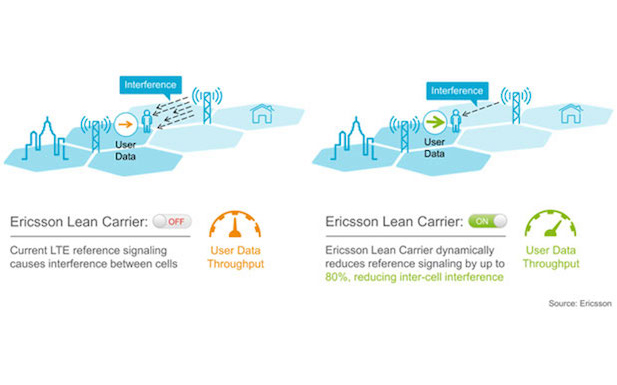Ericsson has introduced a new 4G signalling solution that it said can increase downlink speeds on current LTE devices by up to 50 percent.
Ericsson Lean Carrier works by reducing the level of reference signalling needed for good network performance.
This enables new 256 QAM higher order modulation to be used over a broader area and increases the use of 256 QAM by up to 280 percent, according to the vendor.
By reducing interference, Ericsson said Lean Carrier increases the amount of time during which 64 QAM and 256 QAM encoding schemes can be used by the LTE system.
[Read more: Huawei, Qualcomm and China Mobile verify 4.5G compression tech]
This leads to a corresponding improvement of downlink data speeds across “all parts” of the 4G LTE network, it claimed.
The technology is applied using Ericsson’s LTE basebands combined with the vendor’s intelligent software scheduling algorithms.
Ericsson said the technology would allow for 5G-like speeds to be experienced on current-generation mobile devices, providing users with 50 percent increase in downlink rates with a network average increase of roughly 10 percent.
Per Narvinger, Head of LTE at Ericsson, said: “When LTE was created in 2008, it was straightforward, powerful technology, but now we have added significantly more intelligence.
“Running signalling full-blast limits performance by creating unnecessary intercell interference.
“Drawing on our experience from high-performance networks and projecting forward to what will be possible with 5G, we were able to innovate a solution that optimises the signalling in today’s 4G LTE network.
“Networks that employ the Ericsson Lean Carrier software upgrade will provide a better user experience. And with the shift to small cell architectures in 5G, addressing signalling interference now puts us firmly on the path to meet 2020 requirements.”
South Korea’s SK Telecom is currently trialling the tech in “thousands” of live network cells in urban, suburban and rural areas.
Park Jin-hyo, SVP and Head of Network R&D Centre at SK Telecom, said: “Through this technology commercialisation on LTE base stations, we can expect to enhance the performance at cell edge area and user experience.”



